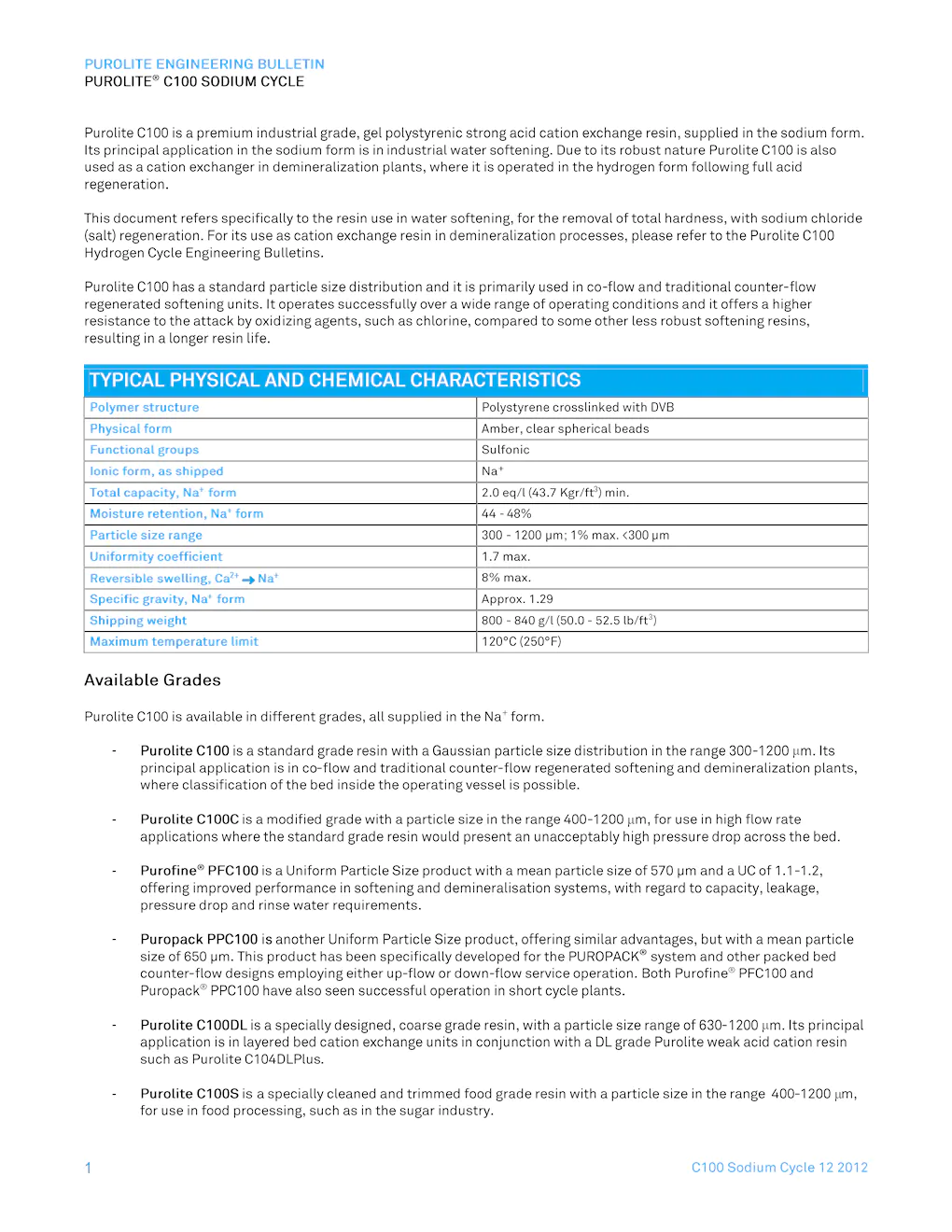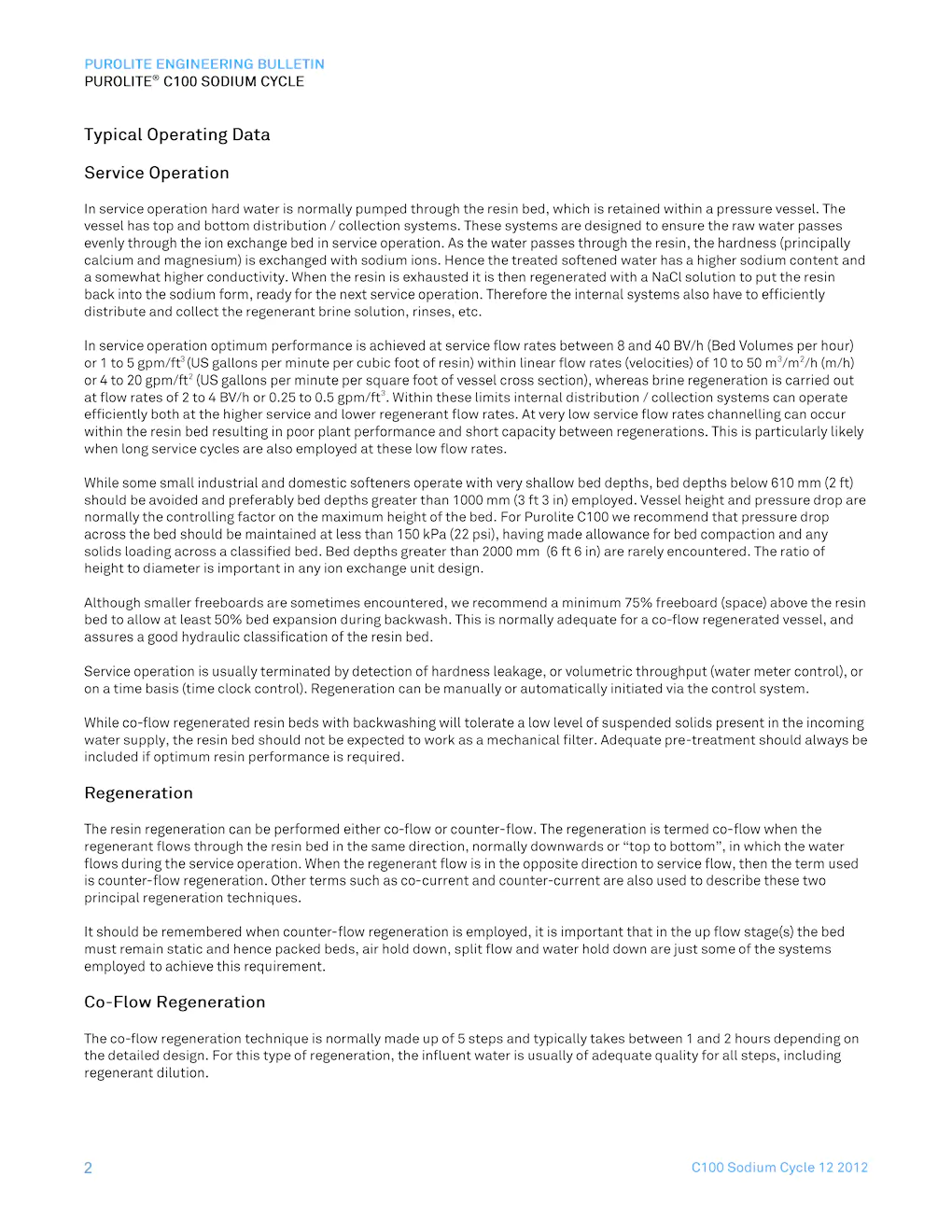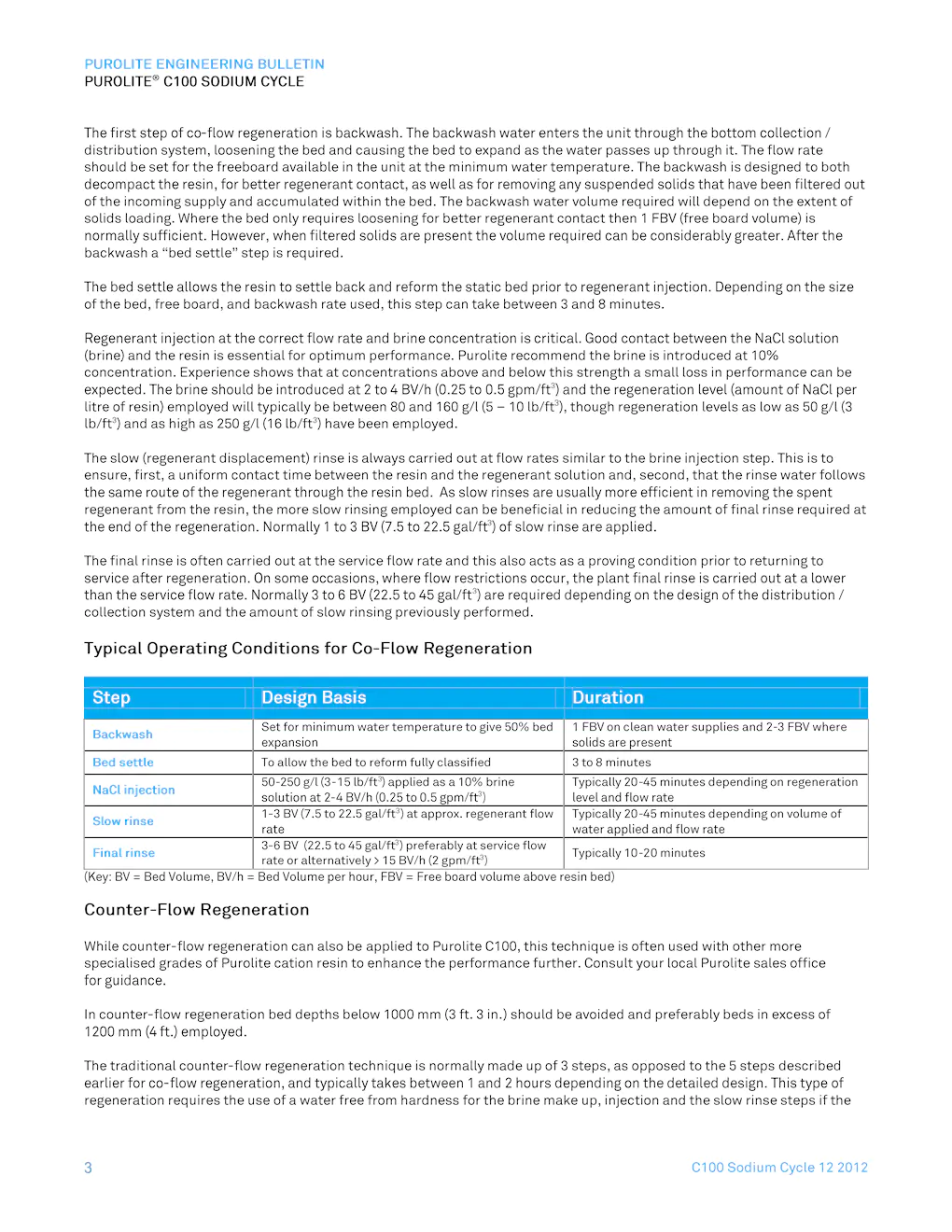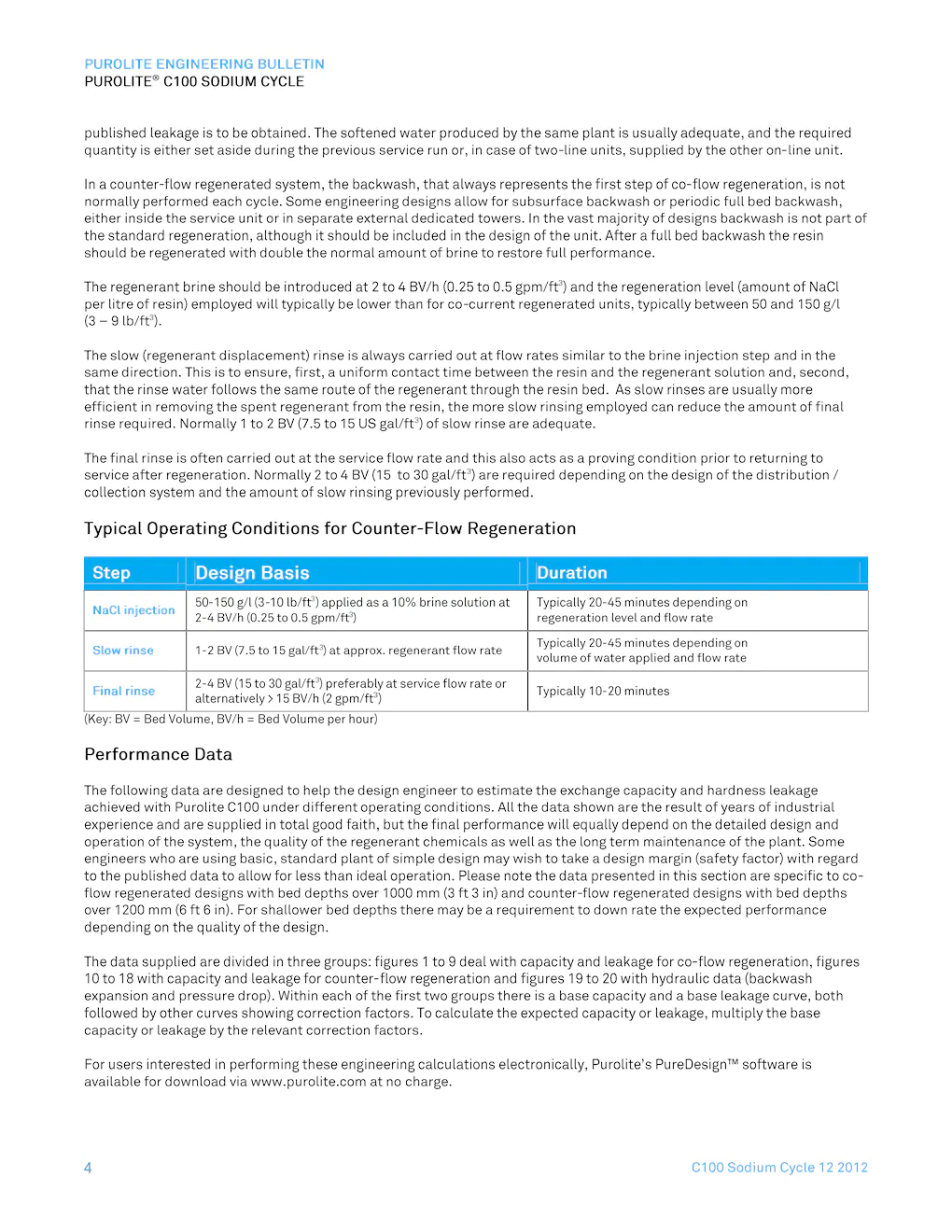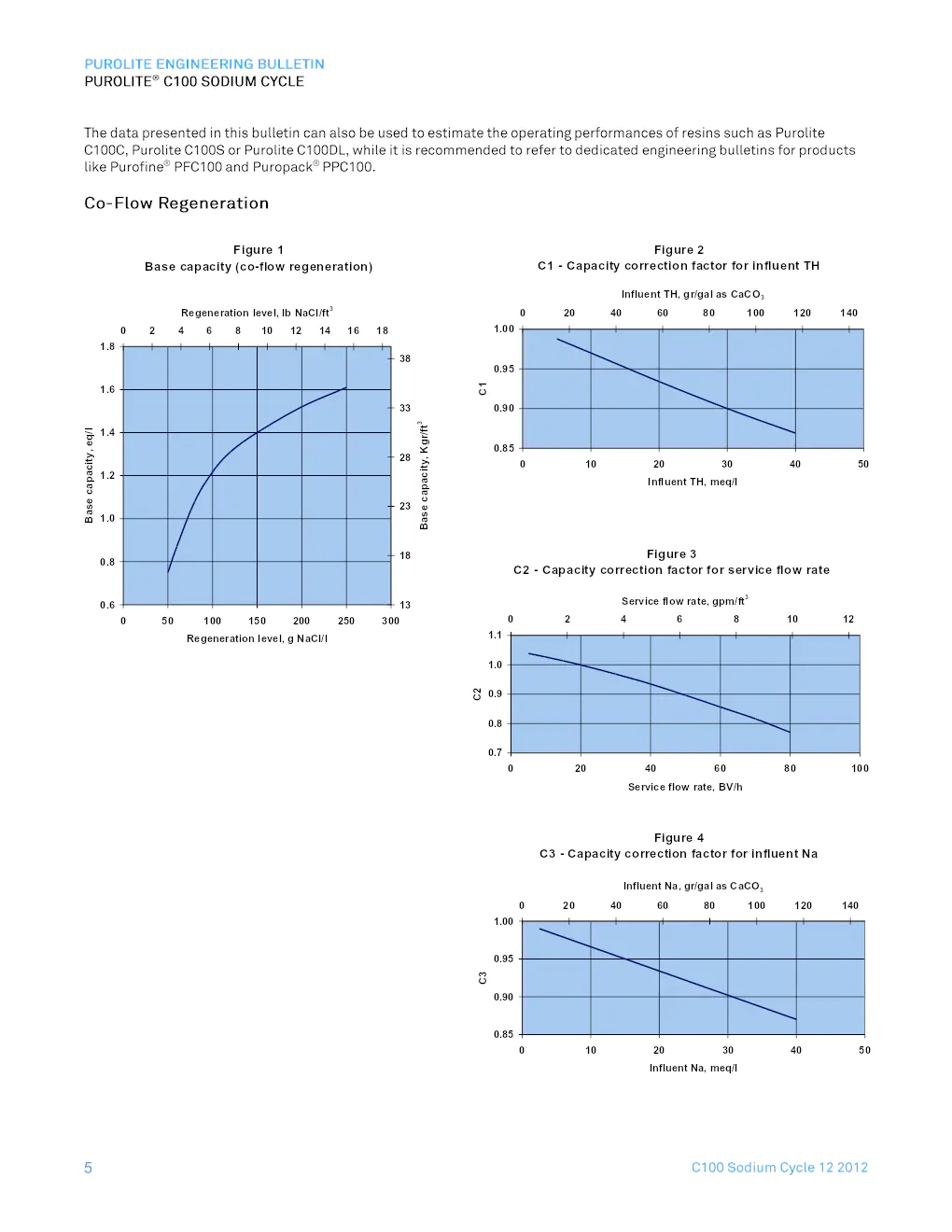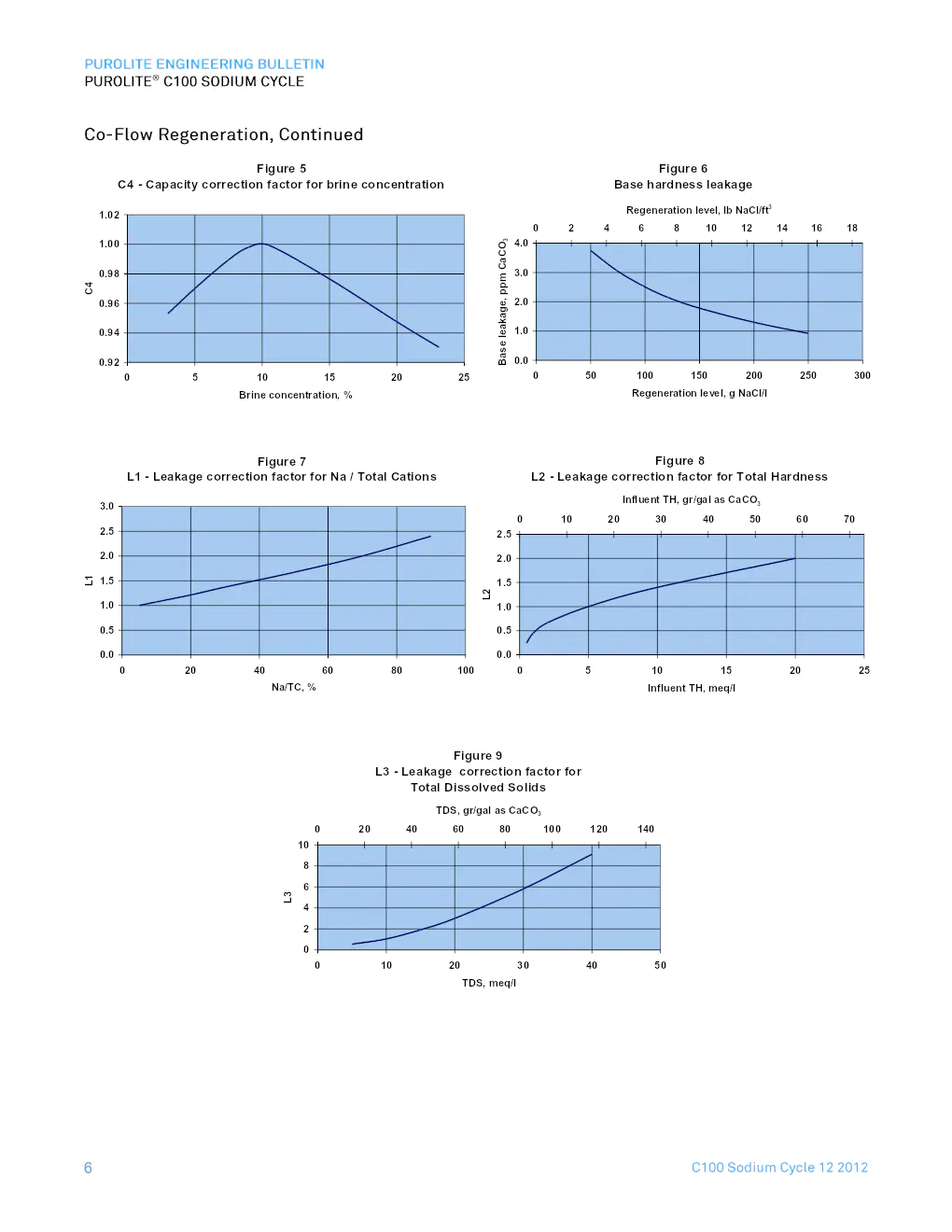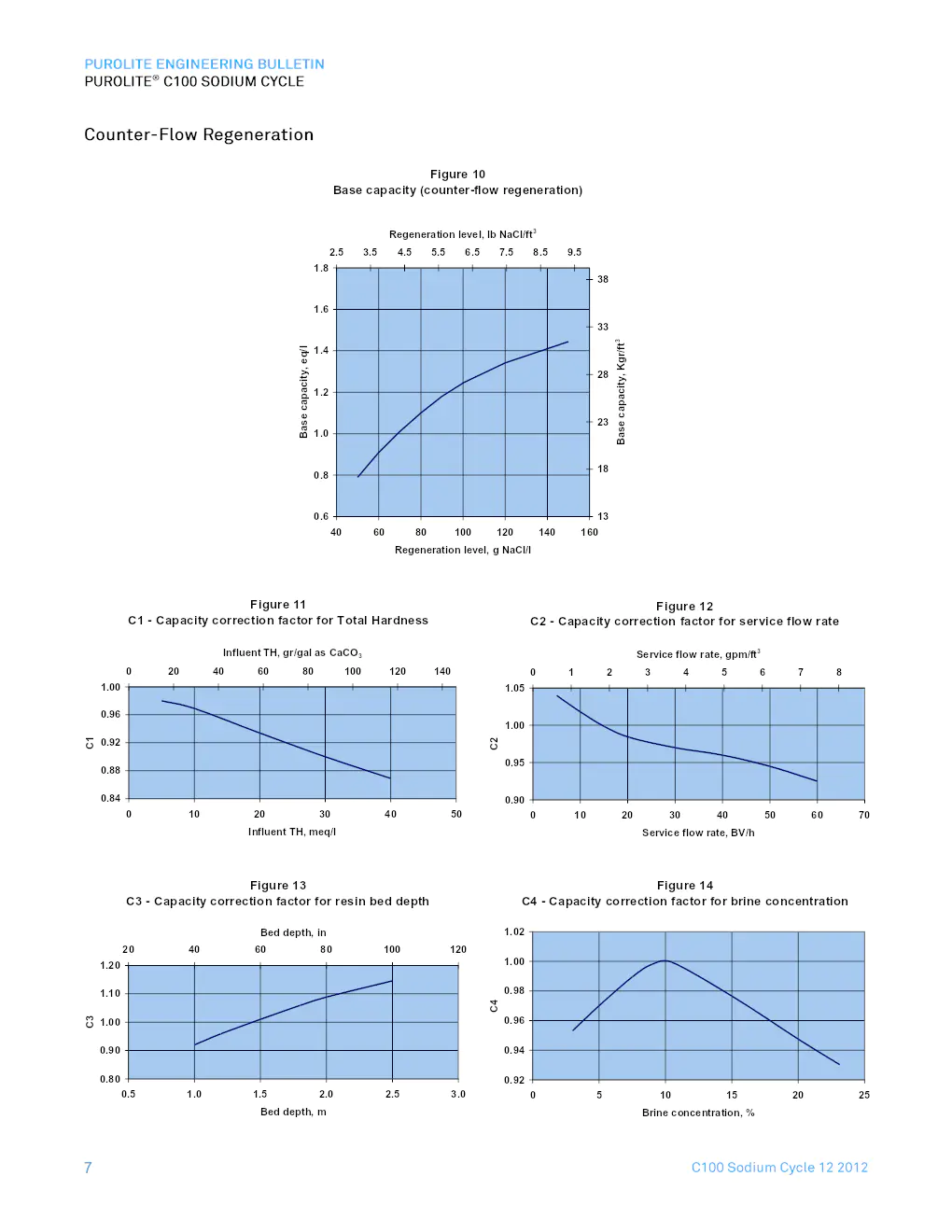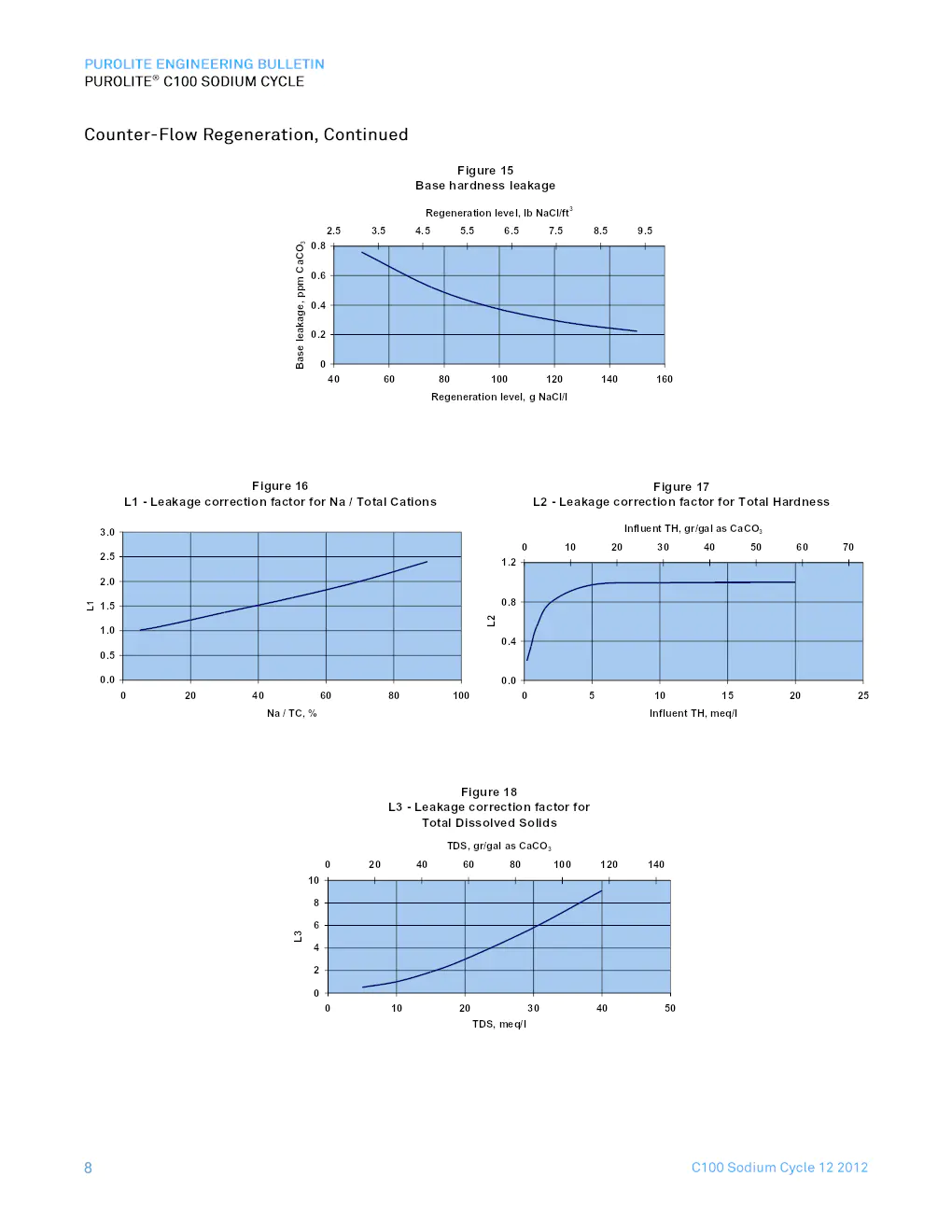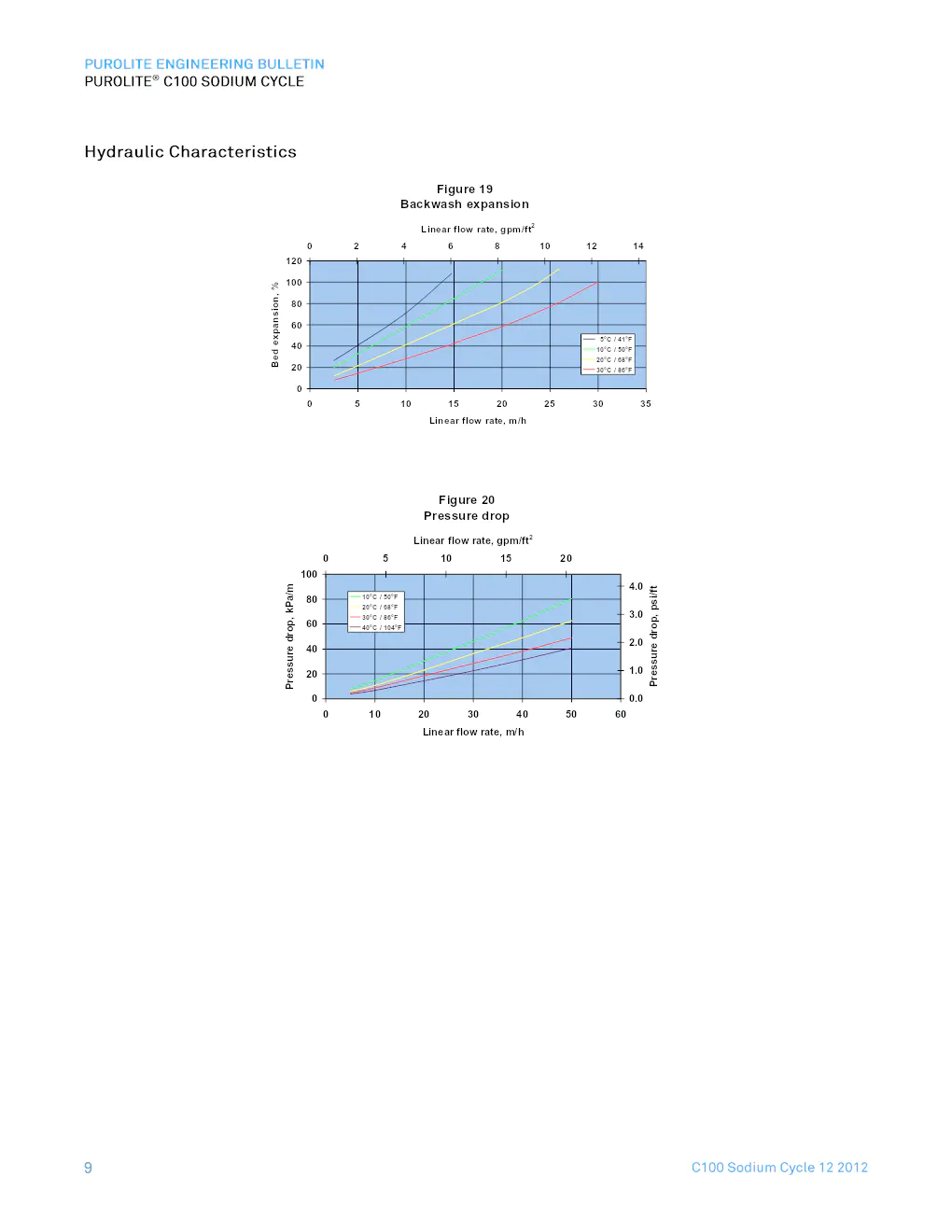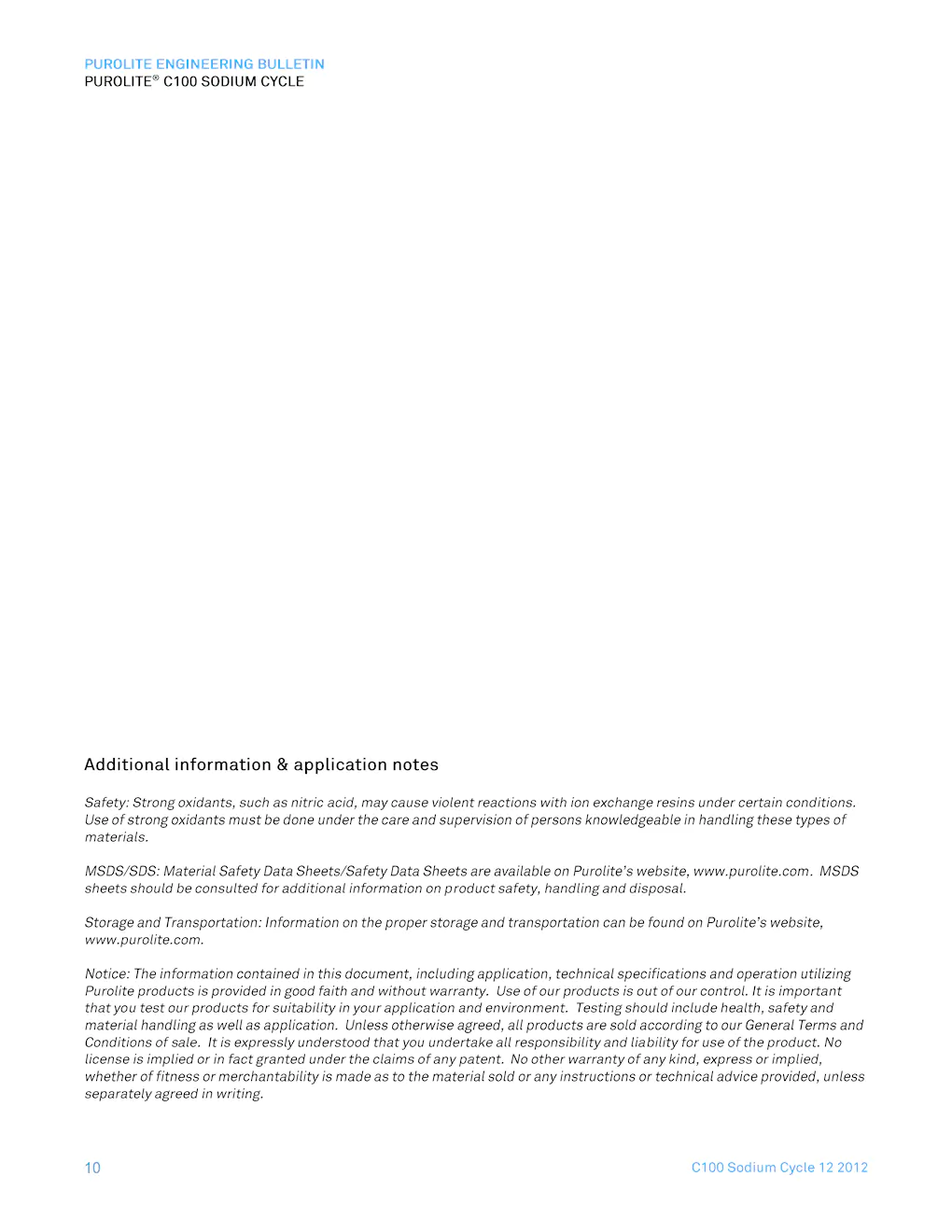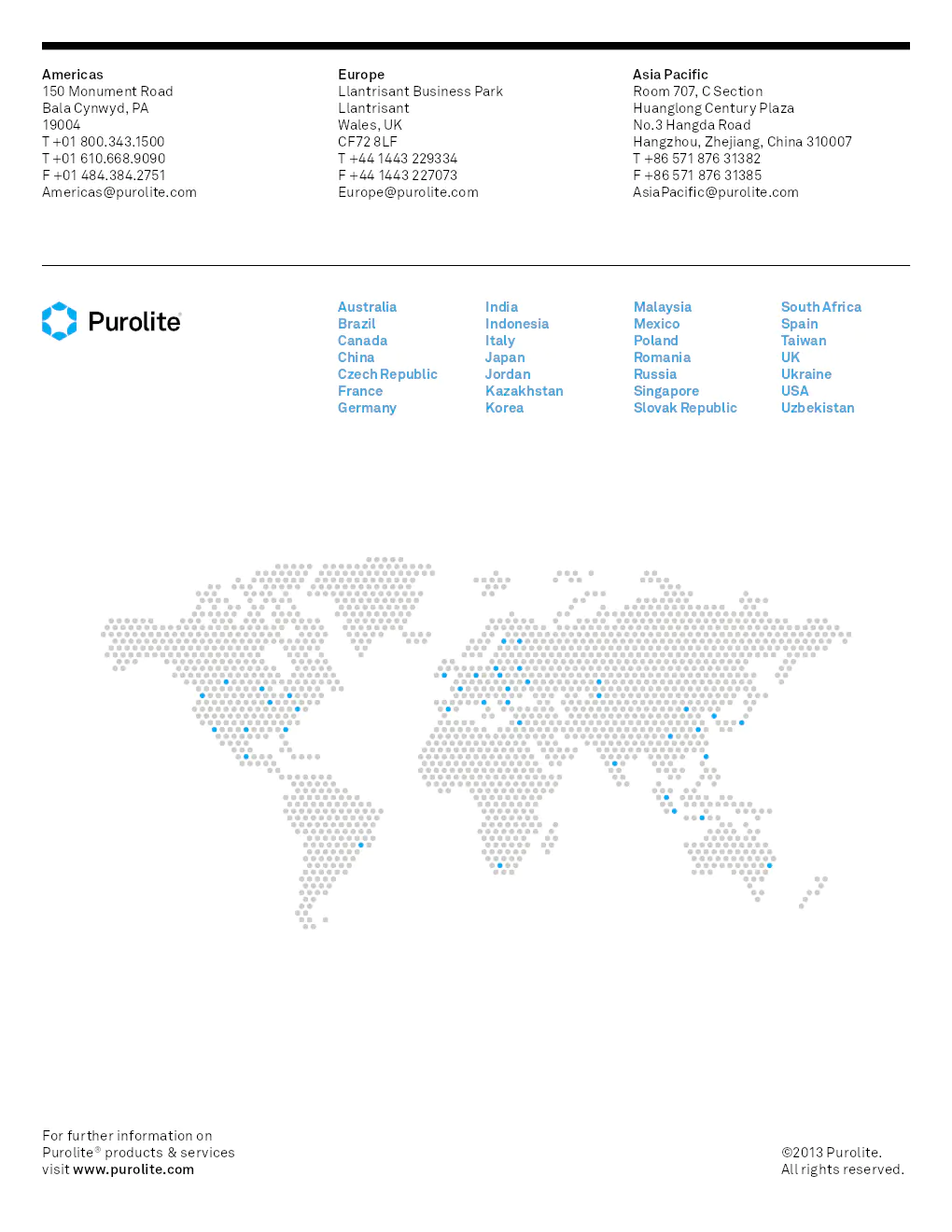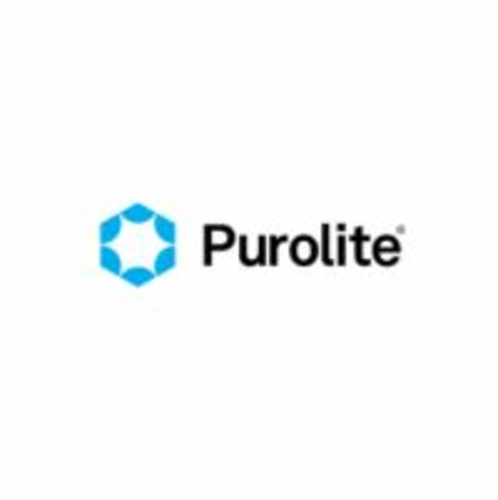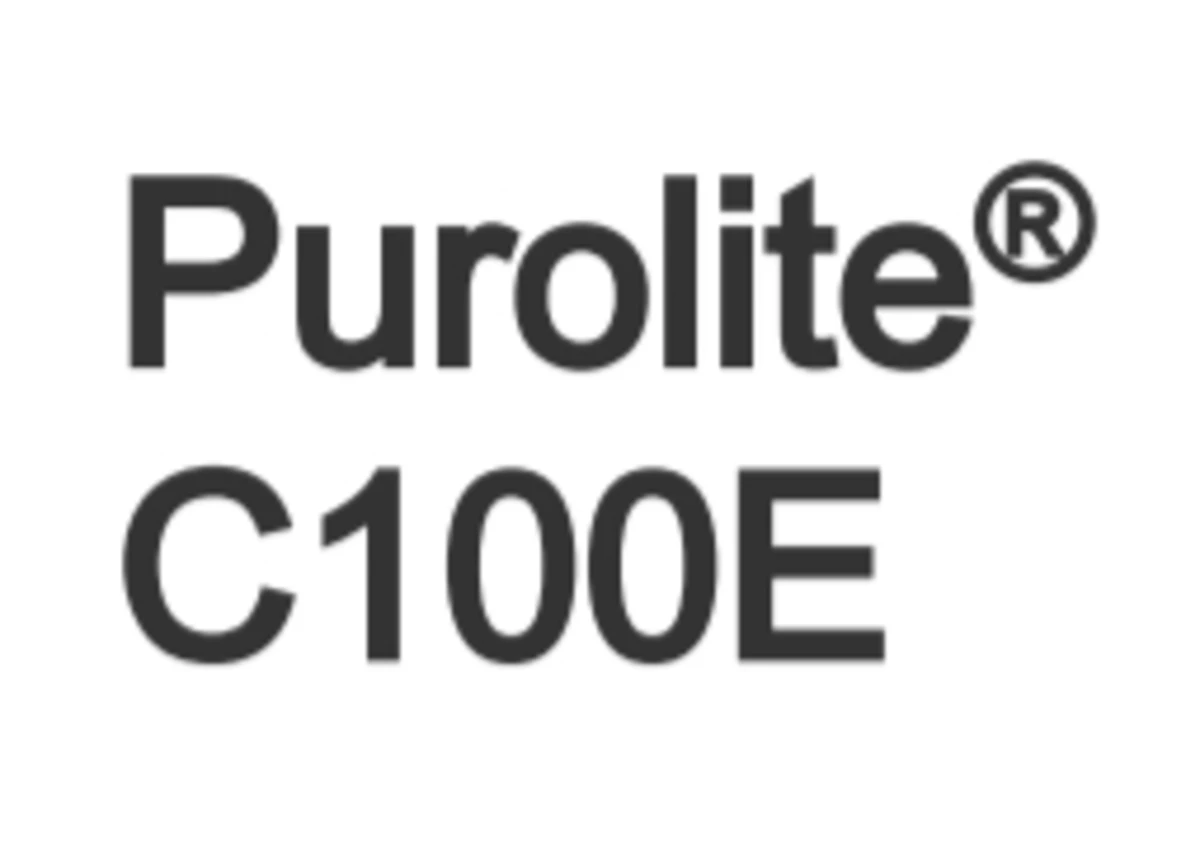engineering bulletin purolite c100 sodium cycle
document technique sur le cycle sodium du purolite c100
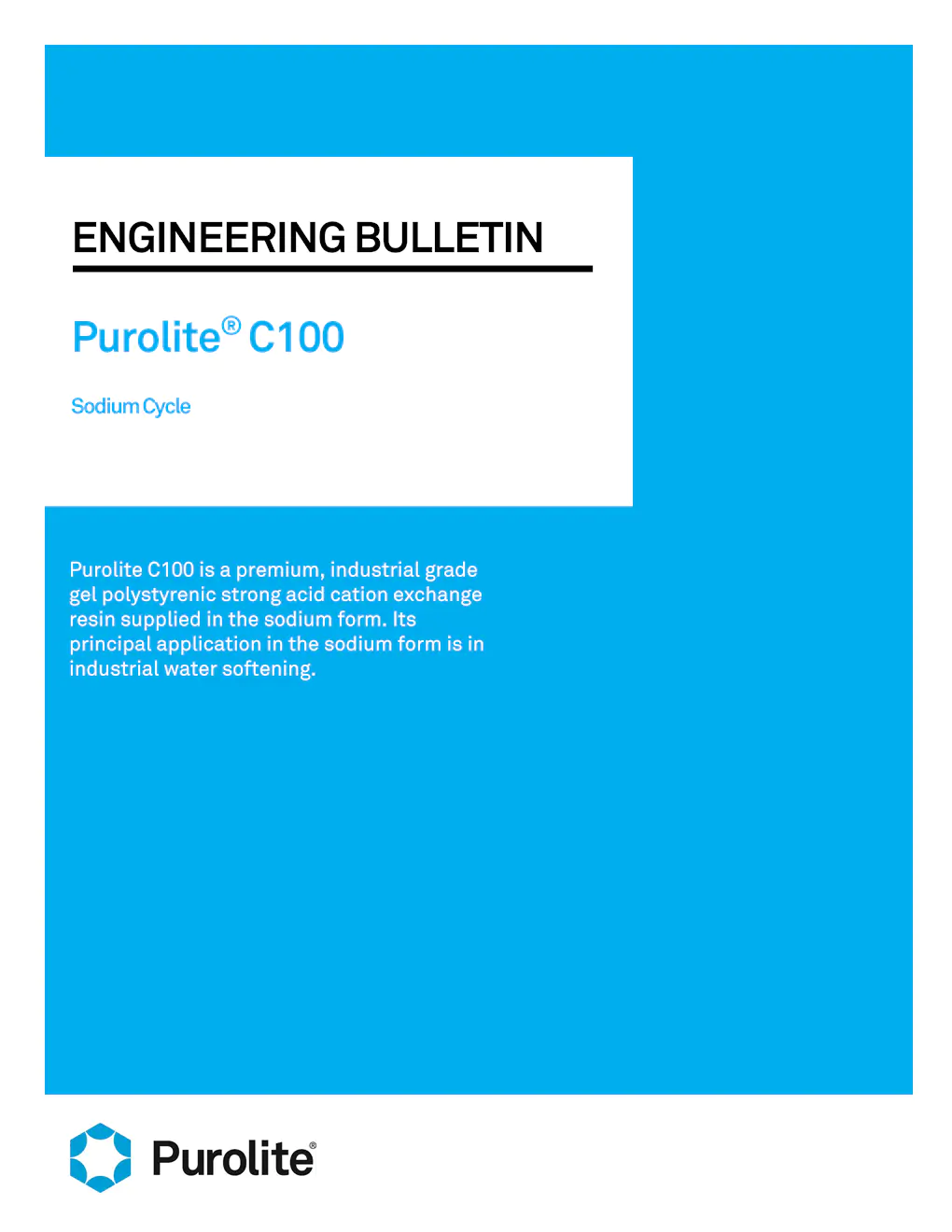
Contenu du document
engineering bulletin
Purolite
purolite engineering bulletin - purolite® c100 sodium cycle
Typical Operating Data
Service Operation
In service operation hard water is normally pumped through the resin bed, which is retained within a pressure vessel. The vessel has top and bottom distribution/collection systems designed to ensure the raw water passes evenly through the ion exchange bed. As water passes through the resin, the hardness (principally calcium and magnesium) is exchanged with sodium ions. The treated softened water has a higher sodium content and conductivity. When the resin is exhausted, it is regenerated with a NaCl solution to put the resin back into the sodium form, ready for the next service operation.
Optimum performance is achieved at service flow rates between 8 and 40 BV/h or 1 to 5 gpm/ft³ within linear flow rates of 10 to 50 m³/m²/h or 4 to 20 gpm/ft², whereas brine regeneration is carried out at flow rates of 2 to 4 BV/h or 0.25 to 0.5 gpm/ft³. At very low service flow rates, channelling can occur within the resin bed resulting in poor performance. Service operation is usually terminated by detection of hardness leakage, volumetric throughput, or time basis.
While co-flow regenerated resin beds with backwashing tolerate a low level of suspended solids in the water supply, adequate pre-treatment should be included for optimum performance.
Regeneration
The resin regeneration can be performed either co-flow or counter-flow. In co-flow regeneration, the regenerant flows through the resin bed in the same direction as the service operation. For counter-flow regeneration, the flow is in the opposite direction to service flow.
Co-Flow Regeneration
The technique is normally made up of 5 steps, taking between 1 and 2 hours. The steps include backwash, bed settle, regenerant injection, slow rinse, and final rinse.
Typical Operating Conditions for Co-Flow Regeneration
- Backwash: Set for minimum water temperature to give 50% bed expansion.
- Bed settle: 3 to 8 minutes
- NaCl injection: 50-250 g/L (3-15 lb/ft³) at 2-4 BV/h
- Slow rinse: 1-3 BV at regenerant flow rate
- Final rinse: 3-6 BV at service flow rate
Counter-Flow Regeneration
This technique is often used with other specialised grades of Purolite cation resin to enhance performance. Bed depths below 1000 mm should be avoided, preferably beds in excess of 1200 mm employed.
Typical Operating Conditions for Counter-Flow Regeneration
- NaCl injection: 50-150 g/L at 2-4 BV/h
- Slow rinse: 1-2 BV at regenerant flow rate
- Final rinse: 2-4 BV at service flow rate
Performance Data
This data helps the design engineer estimate exchange capacity and hardness leakage with Purolite C100 under different conditions.
Additional information & application notes
- Safety: Strong oxidants, such as nitric acid, may cause violent reactions with ion exchange resins under certain conditions.
- MSDS/SDS: Available on Purolite’s website.
- Storage and Transportation: Information available on Purolite’s website.
